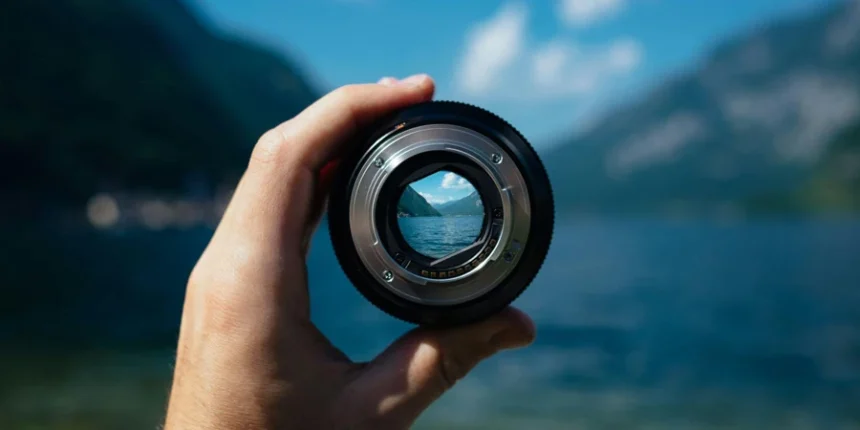Choosing the right camera and lens is a fundamental step for anyone interested in photography, whether as a hobby or a professional pursuit. The vast array of equipment available can be daunting, but with proper guidance, selecting the right tools becomes an easier and more informed process. For photographers looking to excel, understanding the specific strengths and limitations of different cameras and lenses ensures they can make choices that best align with their artistic goals and technical requirements.
Enrolling in a reputable photography course can provide essential insights into the complexities of camera and lens selection, helping budding photographers make choices that best suit their needs and enhance their skills. This article will examine the several aspects of understanding camera and lens selection, ensuring readers are well-equipped to make educated decisions.
Different Types of Cameras and Their Uses
The world of cameras is diverse, with each type serving different photographic needs and styles. Broadly categorised, cameras can range from simple point-and-shoot models to more complex DSLR (Digital Single-Lens Reflex) and mirrorless systems. Point-and-shoot cameras are usually compact and easy to use, ideal for casual photography and everyday moments. With their interchangeable lenses and hand controls, DSLRs offer greater flexibility and image quality, making them favoured by both amateurs and professionals.
On the other hand, Mirrorless cameras provide similar functionalities as DSLRs but in a lighter and more compact form. Understanding the specific advantages of each camera type is crucial in determining which camera best aligns with one’s photographic goals and interests.
Right Lens for Your Photography Style
The lens determines the quality and type of images you can capture. Different lenses are suited for various photography styles—wide-angle lenses are great for landscapes and architectural photography. In contrast, telephoto lenses are ideal for sports and wildlife due to their ability to zoom in on distant subjects. With their focal length, prime lenses offer superior sharpness and aperture speeds, making them perfect for low-light conditions and portraits.
A good photography course will help you understand the technical aspects of each lens type and also assist in selecting the right lens based on your preferred photography style.
Maintaining and Caring for Your Equipment
Proper maintenance and care of photography equipment are vital for longevity and optimal performance. Regular camera cleaning can prevent dust build-up and potential damage to the sensor. Storing equipment in a dry and temperature-controlled environment prevents moisture-related issues and keeps the gear in good working condition.
Routine checks and firmware updates for the camera and lenses can enhance functionality and compatibility. Properly maintaining and caring for your equipment as part of a photography course can save significant costs in repairs and replacements in the long run.
Understanding Sensor Sizes and Image Quality
The camera sensor size significantly affects image quality, depth of field, and the camera’s performance in various lighting conditions. Full-frame sensors offer the best image quality, with a greater ability to capture detail and perform well in low light. Crop sensors, while generally cheaper and more compact, produce a crop factor that can affect the angle of view of lenses.
Medium format cameras, offering even larger sensors than full-frame, provide superior resolution and depth of field at a higher cost. Understanding the implications of sensor size on your photography allows for better decision-making when choosing a camera.
The Role of Camera Settings in Photography
Mastering camera settings is essential for fully utilising the camera’s capabilities. Camera settings like shutter speed and ISO are crucial in determining how much light reaches the sensor, affecting photos’ exposure, blur, and noise levels. Adjusting these settings manually can significantly enhance your creative control over your photography, allowing for more precise adjustments to match your vision.
A comprehensive course will cover these settings in detail, providing practical examples and hands-on exercises to cement your understanding.
Exploring the Impact of Technological Advancements on Camera Evolution
Advancements have been pivotal in the evolution of camera technology, significantly impacting the features and capabilities of modern cameras. Innovations such as image stabilisation, high-performance sensors, and advanced autofocus systems have transformed how photographers capture images, enhancing the ease of use and the quality of photographs. For instance, mirrorless cameras now feature electronic viewfinders (EVFs) that offer real-time previews of exposure changes directly through the viewfinder, a feature once limited to digital displays. The development of 4K video recording and super high-speed shooting modes enables photographers to capture moments with unprecedented detail and clarity.
By understanding these technological enhancements, photographers can better select equipment that truly fits their needs, whether shooting fast-paced sports events that benefit from rapid autofocus or low-light concerts where high ISO performance is vital. A comprehensive course can shed light on these technologies, providing practical insights into choosing the right camera based on the latest advancements, thereby ensuring that photographers can leverage modern technology to its fullest potential in their creative endeavours.
Understanding camera and lens selection is crucial for anyone serious about photography. With the proper knowledge and tools, photographers can significantly enhance the quality of their images and more effectively convey their artistic vision. Enrolling in a reputable online photography course can provide valuable education on camera types, lens choices, maintenance practices, sensor sizes, and camera settings. By investing in this education, photographers ensure they are well-equipped to take on any photographic challenge and succeed in the dynamic field.






